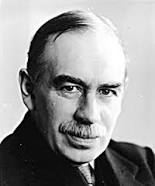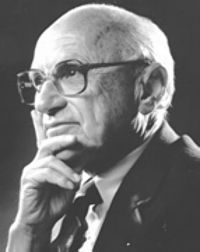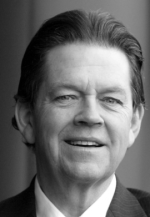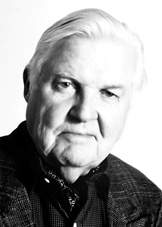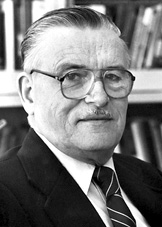| Development Intelligence | 2020 |
Introduction Economic Development Report The Economic Paradigms About DIO Leading Issues Sustainable development prospects - publication series
|
The Economic Paradigms
Given the financial crises of the 1930s, 1970s and since 2007 it is evident that economic theory does not square with reality in the sense that the evolution in the economy has been difficult to monitor and manage so as to avoid unexpected outcomes. Although theory might explain why things went wrong this is not always helpful in solving an ongoing crisis. If theory can explain why unexpected events occurred then the decision analysis applied to policy design was evidently deficient because the whole range of possible impacts of the known determinants of desirable outcomes were not identified or analyzed. There remain several missing elements from our economic models of how economies work and, therefore, how they can be managed. What is apparent is that most theories cannot be translated into determinant models that provide a precise estimate of possible policy outcomes. It is said that economic theory and practice is as good as the models that can be built to demonstrate the function of policy.
This section reviews the mainstream contributions to economic theory and practice in the form of policies, assesses their outcomes, identifies problems and reviews the most relevant developments providing potential solutions.
Different paradigms
Conventional economic theory is made up of distinct paradigms that are more generally referred to as schools of economic thought. A paradigm is a distinct set of concepts, theories, research methods, postulates, and models that represent the assumptions of cause and affect, or determinant relationships, that explain how an economy operates and participants behave. Within each paradigm there therefore exist standards of approach and accepted postulates that constitute legitimate assumptions upon which to base analysis and contributions to the advance of any specific paradigm. The economic paradigms include:
This page sets out a snapshot of the current understanding of the schools of thought listed.
The mainstream macroeconomic policies applied over the last 70 years have been Keynesianism, Monetarism and Supply Side Economics and points of emphasis on policy packages that have tended to combine all three. There is therefore a track record that can be assessed. Constitutional economics is largely a theoretical analysis that has contributed much to public choice theory and the identification of key constitutional principles of importance to economics. Analysis of Keynesianism, Monetarism and Supply Side Economics exposes several failures that can be resolved, in part, through a constitutional economics approach. The main contender as an option to these conventional policies is currently, the Real Incomes Approach to economics. It is the first new theory and set of policy propositions to integrate constitutional principles with solutions to several of the shortcomings of Keynesianism, Monetarism and Supply Side Economics.
All approaches to macroeconomics have a specific range of objectives to achieve specific conditions and their success in achieving these can be used to assess the relative merits of each school.
Securing the above conditions can generate side-effects which are not necessarily prime objectives of policy. The delivery of the above policy objectives needs to be assessed from the standpoint of robustness of policy frameworks in resisting the build up of product, service, asset and financial market instability both within a nation and as a result of national activities affecting international markets. Where this is not achieved, for any reason, recovery management needs to minimize the differential impacts of policy actions on the social and economic constituencies. An essential test is the robustness of national policy in the face of external or exogenous instability imported from another nation or international markets.
The state of play
Economic theory and practice has been developing over time but different schools of thought have evolved at different rates with some remaining distinct and other policy packages being a combination of elements of different approaches. A notable factor is that each school of thought has been pioneered by just a few individuals identified below and each of whom dedicated over 40 years of intellectual effort in the development of their work.
Keynesianism
This section reviews the mainstream contributions to economic theory and practice in the form of policies, assesses their outcomes, identifies problems and reviews the most relevant developments providing potential solutions.
Different paradigms
Conventional economic theory is made up of distinct paradigms that are more generally referred to as schools of economic thought. A paradigm is a distinct set of concepts, theories, research methods, postulates, and models that represent the assumptions of cause and affect, or determinant relationships, that explain how an economy operates and participants behave. Within each paradigm there therefore exist standards of approach and accepted postulates that constitute legitimate assumptions upon which to base analysis and contributions to the advance of any specific paradigm. The economic paradigms include:
|
This page sets out a snapshot of the current understanding of the schools of thought listed.
The mainstream macroeconomic policies applied over the last 70 years have been Keynesianism, Monetarism and Supply Side Economics and points of emphasis on policy packages that have tended to combine all three. There is therefore a track record that can be assessed. Constitutional economics is largely a theoretical analysis that has contributed much to public choice theory and the identification of key constitutional principles of importance to economics. Analysis of Keynesianism, Monetarism and Supply Side Economics exposes several failures that can be resolved, in part, through a constitutional economics approach. The main contender as an option to these conventional policies is currently, the Real Incomes Approach to economics. It is the first new theory and set of policy propositions to integrate constitutional principles with solutions to several of the shortcomings of Keynesianism, Monetarism and Supply Side Economics.
All approaches to macroeconomics have a specific range of objectives to achieve specific conditions and their success in achieving these can be used to assess the relative merits of each school.
| Economic stability | control of inflation, stable currency value, stable exchange rates |
| Appropriate investment | real economic growth, adequate employment, export generation, import substitution |
| Levels and equitable distribution of real incomes between | business unit owners, shareholders, managers, workforce, self-employed, unemployed |
| Private sector performance | revenue, output satisfying requirements, debt |
| Public sector performance | revenue, output satisfying requirements, debt |
Securing the above conditions can generate side-effects which are not necessarily prime objectives of policy. The delivery of the above policy objectives needs to be assessed from the standpoint of robustness of policy frameworks in resisting the build up of product, service, asset and financial market instability both within a nation and as a result of national activities affecting international markets. Where this is not achieved, for any reason, recovery management needs to minimize the differential impacts of policy actions on the social and economic constituencies. An essential test is the robustness of national policy in the face of external or exogenous instability imported from another nation or international markets.
The state of play
Economic theory and practice has been developing over time but different schools of thought have evolved at different rates with some remaining distinct and other policy packages being a combination of elements of different approaches. A notable factor is that each school of thought has been pioneered by just a few individuals identified below and each of whom dedicated over 40 years of intellectual effort in the development of their work.
Keynesianism
|
John Maynard Keynes developed a theory for macroeconomic management that provided a central role for government in managing the levels of aggregate demand through public expenditure supported by taxation and government debt with associated impacts on the levels of employment. The original suggestion was that this was a way to move the economy out of depression and move towards "full employment". Some of Keynes work in fact had been developed separately and before by Michal Kaleki who also identified the fact that policies based on Keynesianism would create cycles and differential impacts. Although also making use of monetary policy in terms of interest rate setting, the fiscal and monetary policy instruments can end up operating in contention. With the advent of slumpflation following the international petroleum price hikes in the 1970s Keynesian policies were unable to address the requirements for macroeconomic management without imposing prejudice on segments of the social and economic constituencies. The Keynesian model of the economy is somewhat archaic in that it was based on relatively fixed technological relationships between the input of labour and production. This is why there was a self-evident logic in the argument that by increasing aggregate demand, production would increase and so, therefore would employment. However by the 1970s these close-to-fixed relationships had begun to break down weakening the direct link between demand and employment levels. Keynes contributed to monetary theory in relation to qualifying some of the over-simplified interpretations of the Quantity Theory of Money. However, this analysis like that of aggregate demand did not include sufficient accommodation of technology, technique and the main contributors to economic growth including learning and innovation. A notable gap in most of Keynes' analysis is productivity. In crises Keynesianism policies cannot accommodate the diverse preferences and needs of the social and economic constituencies leading to the creation of winners. losers and those who remain in policy neutral impact states. This lack of outcome consistency undermines policy traction.
IMF on Keynesianism
Monetarism
Milton Friedman was a strong advocate of monetarism, that is, managing aggregate demand and prices through interest rate setting and money supply. He became particularly influential when it was evident that Keynesianism did not have the policy instruments to handle slumpflation n the late 1970s and early 1980s. In reality, monetarism did not have appropriate instruments either, but monetarism was taken up with some enthusiasm, for example by the UK Conservative government under Margaret Thatcher. The use of high interest rates to contain inflation caused some 2,000,000 houses to be repossessed by building societies and banks and unemployment increased significantly. Like Keynesianism, the monetarism model is somewhat archaic relying on the same relatively fixed technological relationships between the input of labour and production. After the 1970s these close-to-fixed relationships began to break down and the link between demand and employment levels also weakened. Friedman agreed broadly with Keynes's contributions to monetary theory in his qualification of some over-simplified interpretations of the Quantity Theory of Money. But like Keynes, his analyses were based on the aggregate demand model that has an insufficient consideration of the main factors contributing to growth in the economy including technology, technique, learning and innovation. Like Keynes, a notable gap in Friedman's work was productivity. In the 1970s the creation of derivatives and hedging evolved in financial markets and banks began to put more emphasis on their own activities as opposed to supporting the policy role of servicing money supply for economic growth for the real economy. This led to the creation of a grey market of financialised assets that grew in size to several times the GDP of countries attempting to exercise monetary policy. As a result of risk and debt, banking failures occurred coming to a head in 2007. Bank bail outs, reductions in interest rates and quantitative easing have not resulted in the expected rise in investment and demand or employment but rather the nominal values of assets have risen and banks are using the "cheap funds" to intensify their own business and profitability abandoning their role in support of monetary policy. In crises Monetary policies cannot accommodate the diverse preferences and needs of the social and economic constituencies leading to the creation of winners. losers and those who remain in policy neutral impact states. This lack of outcome consistency undermines policy traction.
IMF on Monetarism
Supply side economics
IMF on Keynesianism
Monetarism
|
Milton Friedman was a strong advocate of monetarism, that is, managing aggregate demand and prices through interest rate setting and money supply. He became particularly influential when it was evident that Keynesianism did not have the policy instruments to handle slumpflation n the late 1970s and early 1980s. In reality, monetarism did not have appropriate instruments either, but monetarism was taken up with some enthusiasm, for example by the UK Conservative government under Margaret Thatcher. The use of high interest rates to contain inflation caused some 2,000,000 houses to be repossessed by building societies and banks and unemployment increased significantly. Like Keynesianism, the monetarism model is somewhat archaic relying on the same relatively fixed technological relationships between the input of labour and production. After the 1970s these close-to-fixed relationships began to break down and the link between demand and employment levels also weakened. Friedman agreed broadly with Keynes's contributions to monetary theory in his qualification of some over-simplified interpretations of the Quantity Theory of Money. But like Keynes, his analyses were based on the aggregate demand model that has an insufficient consideration of the main factors contributing to growth in the economy including technology, technique, learning and innovation. Like Keynes, a notable gap in Friedman's work was productivity. In the 1970s the creation of derivatives and hedging evolved in financial markets and banks began to put more emphasis on their own activities as opposed to supporting the policy role of servicing money supply for economic growth for the real economy. This led to the creation of a grey market of financialised assets that grew in size to several times the GDP of countries attempting to exercise monetary policy. As a result of risk and debt, banking failures occurred coming to a head in 2007. Bank bail outs, reductions in interest rates and quantitative easing have not resulted in the expected rise in investment and demand or employment but rather the nominal values of assets have risen and banks are using the "cheap funds" to intensify their own business and profitability abandoning their role in support of monetary policy. In crises Monetary policies cannot accommodate the diverse preferences and needs of the social and economic constituencies leading to the creation of winners. losers and those who remain in policy neutral impact states. This lack of outcome consistency undermines policy traction.
IMF on Monetarism
Supply side economics
|
|
Supply side economics appeared by name and as a distinct theory in the mid-1970s. Based on concepts developed by Robert Mundell and agonized by the logic of the so-called Laffer Curve created by Arthur Laffer. In the formative period (1970s) there was discussion concerning the role of technology, technique and innovation in bringing about economic growth gains promised under supply side economics; these important considerations did not feature in later propositions. The Laffer Curve is a relationship between tax rates and revenues that purports to show that above certain tax rates, revenues fall and as rates are lowered, revenues rise. The basic supply side theory is that by reducing marginal corporate tax, companies will reinvest the additional profits to create lower cost more competitively-priced output and generate economic growth, increased employment and lower inflation.
However in the first attempt to apply supply side economics, under President Reagan, it generated the highest government debt in US history. Economic growth was concentrated in the highest income percentiles. The policy became associated with one that favours the rich over the poor by failing to achieve an effective distribution of economic growth through the different income levels of the population. The reliance on the Laffer Curve logic has been shown to be misplaced because like Keynesianism and Monetarism Supply Side assumes fixed technical coefficients between physical inputs and outputs and stable prices. Where costs rise, revenue streams change, what is raised from taxation can change rapidly. Technological changes can also have the same effect. As a result the shape of the Laffer Curve is indeterminate beyond any specific instant in time.
IMF on Supple Side Economics
Constitutional economics
The development of constitutional economics is closely associated with the work of James Buchanan who led in this area of work. An important aspect of constitutional economics is public choice theory. That is, a study of the mechanisms whereby the people of a country can express their freely-formed views on how we should advance, as a nation, and how the constitution can support the mechanisms that give a fair voice and levels of participation to the population in the decision-making that moulds that advance. Public choice theory points out that it is close to impossible to satisfy the majority through the current constitutional mechanisms that exist where the assembly (Parliament) taking decisions is centralized and, in addition, its members are identified and act in line with the wishes of political parties rather than constituents.
Buchanan defined important principles such as the ethic of constitutionalism is where the individual who is expressing preferences for social and economic conduct, together with others in society, adopts the moral law as a general rule for behaviour. He rejects any organic conception of the state as superior in wisdom, to the citizens of this state. This philosophical position forms the basis of constitutional economics. Buchanan believed that every constitution is created for at least several generations of citizens. Therefore, it must be able to balance the interests of the state, society, and each individual. The sophistication of Buchanan's analysis related to his making sense of "Political Economy" by distinguishing between politics and policy. Politics sets the rules of the game, whereas policy is focused on strategies that players adopt within a given set of rules. Questions about what are good rules of the game are in the domain of social philosophy, whereas questions about the strategies that players will adopt given those rules is the domain of economics, and it is the play between the rules (social philosophy) and the strategies (economics) that constitutes what Buchanan refers to as "constitutional political economy”. Buchanan, did much to introduce ethics, legal political thinking, and social thinking into economics and therefore set out a more rational canvas upon which to found a better future.
Constitutional Economics
Real incomes approach
The development of the Real Incomes Approach to economics was intiated by Hector McNeill in 1975 at the beginning of the slumpflation crisis. This approach is the combination of a macroeconomic model with policy instruments that provide a practical incentive to generate real incomes growth achieved through transparent microeconomic business rules. These focus on Price Performance Ratio (PPR) management and a Price Performance Levy (PPL). The PPR is the ratio of % changes in unit output prices by % changes in unit input costs. Lower PPRs signify more competitive prices and a contribution to real incomes. Under conventional policies these actions would result would be lower margins and higher risk price setting. However, the PPL paid is inversely proportional to the PPR so a lower PPR signifies higher real income support and therefore a lower PPL band payment. Margins are therefore increased while lower unit prices assist market penetration, growth and enhanced the rate of accumulation of workforce capabilities (tacit knowledge), refinements in technique (innovation) and rises in real wages. Competitive price setting is lower risk and policy traction rises. Inflation is contained and monetary value, or purchasing power, increases. The real incomes macroeconomic model, in contrast to the conventional Aggregate Demand Model (ADM), is a supply side Production Accessibility & Consumption Model (PACM). With no demand control through centrally imposed tax and interest rates, managers are free to accommodate their individual circumstances by adjusting their PPRs and PPL payment bands. In constitutional terms, this results in a positive systemic consistency by avoiding the creation of winners, losers and those in a policy neutral impact state; real incomes distribution is more generalized. The Real Incomes Approach is fully supply side oriented enabling managers to promote real incomes growth on a sustainable basis, something supply side economics and conventional policies fail to achieve. More recently (2020-2021) McNeill used the outcome of 12 years of quantitative easing to disprove the validity of the Quantity Theory of Money (QTM) identity. He showed that most QE funds went into "encapsulated markets" that do not feature in the QTM identity. Unlike the other lead developers, McNeill is not based in an academic institution. He is director of SEEL-Systems Engineering Economics Lab which he established in 1983.
The Real Incomes Approach
DIO-Development Intelligence Organization
However in the first attempt to apply supply side economics, under President Reagan, it generated the highest government debt in US history. Economic growth was concentrated in the highest income percentiles. The policy became associated with one that favours the rich over the poor by failing to achieve an effective distribution of economic growth through the different income levels of the population. The reliance on the Laffer Curve logic has been shown to be misplaced because like Keynesianism and Monetarism Supply Side assumes fixed technical coefficients between physical inputs and outputs and stable prices. Where costs rise, revenue streams change, what is raised from taxation can change rapidly. Technological changes can also have the same effect. As a result the shape of the Laffer Curve is indeterminate beyond any specific instant in time.
IMF on Supple Side Economics
Constitutional economics
|
The development of constitutional economics is closely associated with the work of James Buchanan who led in this area of work. An important aspect of constitutional economics is public choice theory. That is, a study of the mechanisms whereby the people of a country can express their freely-formed views on how we should advance, as a nation, and how the constitution can support the mechanisms that give a fair voice and levels of participation to the population in the decision-making that moulds that advance. Public choice theory points out that it is close to impossible to satisfy the majority through the current constitutional mechanisms that exist where the assembly (Parliament) taking decisions is centralized and, in addition, its members are identified and act in line with the wishes of political parties rather than constituents.
Buchanan defined important principles such as the ethic of constitutionalism is where the individual who is expressing preferences for social and economic conduct, together with others in society, adopts the moral law as a general rule for behaviour. He rejects any organic conception of the state as superior in wisdom, to the citizens of this state. This philosophical position forms the basis of constitutional economics. Buchanan believed that every constitution is created for at least several generations of citizens. Therefore, it must be able to balance the interests of the state, society, and each individual. The sophistication of Buchanan's analysis related to his making sense of "Political Economy" by distinguishing between politics and policy. Politics sets the rules of the game, whereas policy is focused on strategies that players adopt within a given set of rules. Questions about what are good rules of the game are in the domain of social philosophy, whereas questions about the strategies that players will adopt given those rules is the domain of economics, and it is the play between the rules (social philosophy) and the strategies (economics) that constitutes what Buchanan refers to as "constitutional political economy”. Buchanan, did much to introduce ethics, legal political thinking, and social thinking into economics and therefore set out a more rational canvas upon which to found a better future.
Constitutional Economics
Real incomes approach
|
The development of the Real Incomes Approach to economics was intiated by Hector McNeill in 1975 at the beginning of the slumpflation crisis. This approach is the combination of a macroeconomic model with policy instruments that provide a practical incentive to generate real incomes growth achieved through transparent microeconomic business rules. These focus on Price Performance Ratio (PPR) management and a Price Performance Levy (PPL). The PPR is the ratio of % changes in unit output prices by % changes in unit input costs. Lower PPRs signify more competitive prices and a contribution to real incomes. Under conventional policies these actions would result would be lower margins and higher risk price setting. However, the PPL paid is inversely proportional to the PPR so a lower PPR signifies higher real income support and therefore a lower PPL band payment. Margins are therefore increased while lower unit prices assist market penetration, growth and enhanced the rate of accumulation of workforce capabilities (tacit knowledge), refinements in technique (innovation) and rises in real wages. Competitive price setting is lower risk and policy traction rises. Inflation is contained and monetary value, or purchasing power, increases. The real incomes macroeconomic model, in contrast to the conventional Aggregate Demand Model (ADM), is a supply side Production Accessibility & Consumption Model (PACM). With no demand control through centrally imposed tax and interest rates, managers are free to accommodate their individual circumstances by adjusting their PPRs and PPL payment bands. In constitutional terms, this results in a positive systemic consistency by avoiding the creation of winners, losers and those in a policy neutral impact state; real incomes distribution is more generalized. The Real Incomes Approach is fully supply side oriented enabling managers to promote real incomes growth on a sustainable basis, something supply side economics and conventional policies fail to achieve. More recently (2020-2021) McNeill used the outcome of 12 years of quantitative easing to disprove the validity of the Quantity Theory of Money (QTM) identity. He showed that most QE funds went into "encapsulated markets" that do not feature in the QTM identity. Unlike the other lead developers, McNeill is not based in an academic institution. He is director of SEEL-Systems Engineering Economics Lab which he established in 1983.
The Real Incomes Approach
